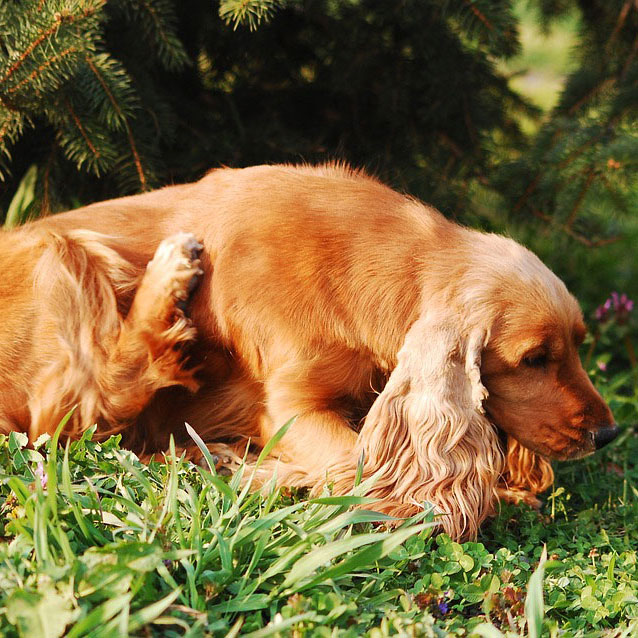 As we said in our article a few weeks ago, Autumn is one time of year when you could find your dog (and home) at risk of flea infestation. The heating gets turned up and they snuggle in to breeding season in your carpets or wooden floors, spending very little time on the dog itself.
As we said in our article a few weeks ago, Autumn is one time of year when you could find your dog (and home) at risk of flea infestation. The heating gets turned up and they snuggle in to breeding season in your carpets or wooden floors, spending very little time on the dog itself.
So, how do you identify that your dog has fleas before it becomes a big scale problem in your home?
Look In The Right Places First
There are particular places that are “hot spots” for fleas. When you groom your dog it’s worth checking these spots each time for the telltale signs. Check the back of their ears, back of neck, along their back and the base of their tail.
How to Search
A good way to search is to part the fur with a comb and check around the roots. Fleas are dark brown in colour and move quickly, so you may not spot them easily. If you don’t see any fleas you may still find their droppings on your dog’s skin.
Searching Long Haired or Dark Dogs
Even if your dog has long hair or a dark coat, there are still methods you can use if the grooming method above isn’t possible. Lay or stand your dog on a white towel. This way, when you brush them, the flea droppings will fall out onto the towel and allow you to identify the presence of fleas.
Identifying the Flea Droppings
Flea droppings are easy to identify as they resemble pepper when on your dog’s skin or fur. If you find any of these pepper spots on your dog then put them on some kitchen towel or white paper and drop a spot of water on them. If they turn red around the edges then it’s flea droppings.
Preventing Flea Infestations
It’s always better (and nicer) not to have to deal with fleas, so it’s worth investing in some prevention methods such as flea collars, and, of course, regular flea treatments. Flea treatments are available online and at pet stores as well as from your vet. If you have concerns about which to use on your dog then your vet will be happy to help and advise.

